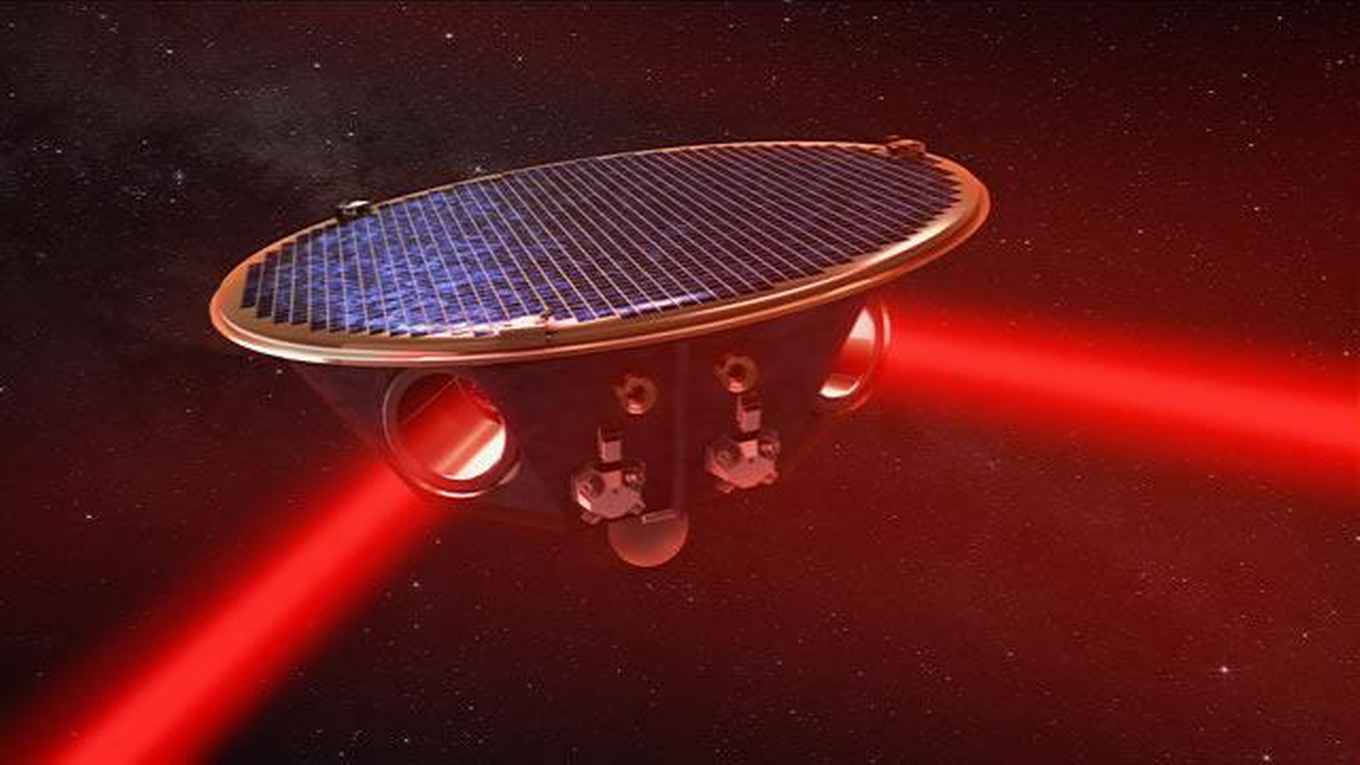Road Map grant enables Dutch participation in LISA mission of ESA and NASA
20 February 2023

LISA
The Laser Interferometer Space Antenna (LISA) consists of three spacecraft that, starting in 2035, will follow the Earth in its orbit around the Sun. By continuously measuring their relative distances, the detectors will detect gravitational waves coming from elsewhere in the universe. In this way, LISA’s arms cover a distance of 2.5 million kilometres, allowing the detector to measure gravitational waves of longer wavelengths than its terrestrial counterparts.
Samaya Nissanke, one of the UvA astrophysicists involved in the project, says: ‘LISA will allow us to ‘listen’ to what happens in space. We can hear echoes of the big bang and the first black holes that populated the universe, and follow the chaotic trajectories of stars that are devoured by black holes. These will be marvelous tests of Einstein’s general theory of relativity.’
Dutch contribution
The consortium, led by space research institute SRON, consists of many partners. Besides UvA and Nikhef, the universities of Nijmegen, Leiden, Utrecht, Maastricht and Groningen are involved, as is TNO. Together, they will build photo diodes (LISA’s ‘eyes’), software, the pointing mechanism and the electronics to read out its data.
Michael Wise, SRON director, professor by special appointment of Observational High-Energy Astrophysics at UvA and one of the driving forces behind the proposal, explains: ‘Pointing LISA is not straightforward. The directions have to be extremely precise, since every laser needs to hit a lens about 2.5 million kilometres away. Moreover, the light takes 8 seconds to reach that point, and in the mean time the detectors move. It is like pointing a laser from Amsterdam to hit a small coin dropping from the Eiffel tower in Paris, at the precise moment it hits the ground.’
The photo diodes must also be extremely sensitive. They have to detect the laser light, emitted with 1 Watt of power – comparable to a table lamp – but arriving with over a billion times less, around 250 picoWatts.
Finally, developing the software is a challenge in itself. The software has to be able to distinguish all different types of gravitational waves, coming from all possible directions, that continuously make the spacecraft vibrate with different frequencies and amplitudes.
Dutch interest
‘The Dutch contribution to LISA is very important,’ Gijs Nelemans, one of the leaders of the LISA-NL consortium, says. ‘Dutch scientists will gather unique expertise, and the access to all data will help us build a lead in the only existing way into a completely new field of research.’
The institutes that are involved will collect knowledge and insight into how to develop such extremely precise techniques. In this way, they will support and strengthen their candidacy to build, together with German and Belgian partners, the Einstein Telescope – another gravitational wave detector that is projected to be built in the region where the Netherlands, Germany and Belgium meet.